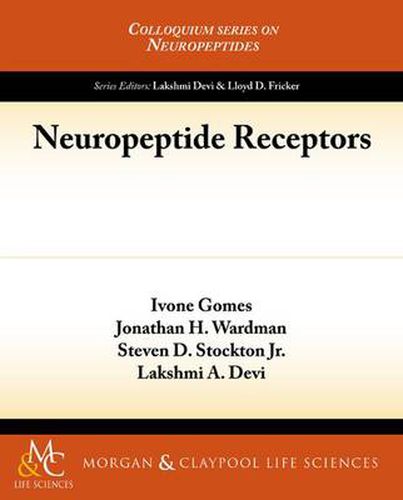Readings Newsletter
Become a Readings Member to make your shopping experience even easier.
Sign in or sign up for free!
You’re not far away from qualifying for FREE standard shipping within Australia
You’ve qualified for FREE standard shipping within Australia
The cart is loading…






Neuropeptides mediate their effects by binding and activating receptors that are responsible for converting these extracellular stimuli into intracellular responses. Most neuropeptides interact with G protein-coupled receptors that transduce the signal by activating heterotrimeric G proteins leading to alterations in second messenger systems to amplify the signal and elicit the intracellular response. In this review, we describe the general structure of G protein-coupled receptors including the information obtained from crystal structure determination that has given an insight into the activation mechanism of these receptors. In addition, we summarize the components of the signal transduction system (including G proteins, effectors and second messengers generally activated by the neuropeptide receptors). Using select examples of neuropeptide-receptor systems, we highlight the neuropeptides and corresponding receptors involved in modulation of pain and analgesia, body weight regulation, and hormonal regulation. Finally, we discuss the enzyme-linked tyrosine kinase receptors activated by growth factors and discuss the emerging concepts in targeting neuropeptide receptors for the identification of novel therapeutics targeting these systems.
$9.00 standard shipping within Australia
FREE standard shipping within Australia for orders over $100.00
Express & International shipping calculated at checkout
Neuropeptides mediate their effects by binding and activating receptors that are responsible for converting these extracellular stimuli into intracellular responses. Most neuropeptides interact with G protein-coupled receptors that transduce the signal by activating heterotrimeric G proteins leading to alterations in second messenger systems to amplify the signal and elicit the intracellular response. In this review, we describe the general structure of G protein-coupled receptors including the information obtained from crystal structure determination that has given an insight into the activation mechanism of these receptors. In addition, we summarize the components of the signal transduction system (including G proteins, effectors and second messengers generally activated by the neuropeptide receptors). Using select examples of neuropeptide-receptor systems, we highlight the neuropeptides and corresponding receptors involved in modulation of pain and analgesia, body weight regulation, and hormonal regulation. Finally, we discuss the enzyme-linked tyrosine kinase receptors activated by growth factors and discuss the emerging concepts in targeting neuropeptide receptors for the identification of novel therapeutics targeting these systems.